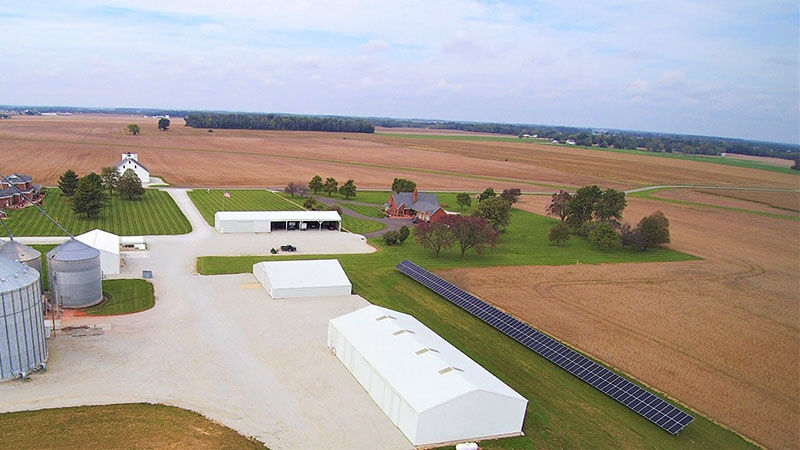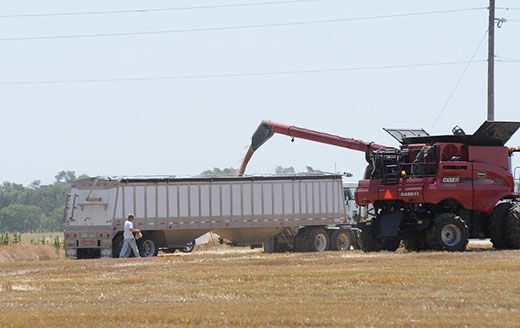A newly completed solar microgrid system near Greensburg, Indiana, in Decatur County is expected to generate enough emissions-free clean energy to offset nearly 4,000 tons of carbon dioxide over its lifetime, the same amount produced from driving 5 million miles.
Emergent Solar Energy, located in the Purdue Research Park of West Lafayette, created the system for the Corya System PCF crop production facility. It consists of a 65-kilowatt, bifacial ground-mount solar array plus 30 kilowatts of energy storage with a natural gas and propane backup generator. It also includes charging stations for electric vehicles that will replace the farm’s gas-powered vehicles over time and further use clean energy production for their operation.
Jeremy Lipinski, managing partner at Emergent Solar Energy, said it is the company’s first design with multiple sources of power generation and energy storage.
"This microgrid solution uses solar energy plus energy storage along with being connected to the REMC, or Rural Electric Membership Corp., utility grid," Lipinski said. "It optimizes the farm’s energy use of the lowest-cost source of energy at any moment, thereby reducing the energy costs and fixing an increasing input."
This is the first addition to the Corya System renewable energy portfolio. Adding solar power with energy storage was the first step in the company’s long-term vision of lowering its carbon footprint and using clean energy to power its operation. P. David Corya, general manager of the Corya System, decided to implement solar energy options for several economic and sustainability reasons.
"From an economic perspective, the project offsets traditional grid usage and insulates our operation from rising energy prices, creating a significant and growing cost of production advantage, while enabling additional future cost savings from electric vehicle fleet conversion," Corya said.
"From a sustainability perspective, we are committed to stewardship practices that protect air, soil, water and wildlife. We use the best available technology to manage our properties and utilize management practices that protect and conserve natural resources for the benefit of future generations."
Lipinski said the application of on-farm solar plus energy storage makes sense when renewable energy can be dispatched to offset the highest-cost demand and charge the battery bank at the lowest cost.
"We are at the tipping point of commercial energy storage here in Indiana, and as utility prices continue to increase, solar plus storage will only become more of a viable solution for energy independence," Lipinski said. "This project allows the Corya System to reduce the amount of energy it needs to buy from the utility and minimizes its exposure to increasing energy costs while it continues to integrate clean energy in their facilities."


